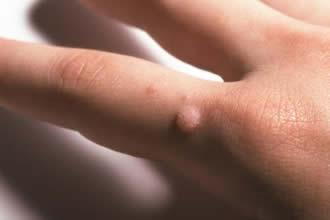
Warts are the result of a virus known as the human papillomavirus (HPV), and they can easily be spread from one person to another through skin-to-skin contact or by sharing items such as towels or clothes with the infected individual. While warts of the hands may be unsightly or embarrassing, it’s important to note that these growths are benign and harmless. Here’s what you should know about treating warts, including how a dermatologist will treat this common skin problem.
How do I know that it’s a wart?
If you’ve never had a wart before then you may not know what this little growth is at first. Warts are raised, skin-colored bumps that may be rough to the touch and grainy in appearance. If you look closely at the bump you may notice little black dots. These are small blood vessels. Since warts can be confused for cysts and other lesions, it may be a good idea to see a dermatologist first before you begin treatment.
How are warts treated?
Some people simply wait until their body fights the infection and the wart eventually goes away, but this can take months or even years. People who are dealing with warts in more sensitive and visible places such as their hands are more likely to want to get rid of the wart a lot sooner. Many healthy individuals turn to over-the-counter remedies first. There are salicylic acid solutions that you can apply directly to the wart and will need to continue to reapply regularly. This solution will shed layers of the wart until gone.
While no study tests the effectiveness of duct tape for removing warts, it not an unsafe practice or option (and if it works for you, great!). If you’ve given it a valiant effort to treat the wart on your own but it just doesn’t seem to respond to over-the-counter treatment options, or it returns, then it’s time to see your dermatologist. A dermatologist offers a variety of ways to remove a wart, including,
- Cryotherapy: Freezing the wart off is a common method for removing warts
- Cantharidin: A chemical is applied to the wart, which causes it to blister and fall off
- Surgical excision: If the bumps do not respond to other treatment options or are in hard-to-treat areas, this may be the ideal method for removal
We understand that warts can develop in rather awkward and sometimes uncomfortable places like the hands. If this happens to you and you don’t want to wait until your body clears the infection to get rid of your wart, then a dermatologist can provide you with the treatment you need to remove the wart more quickly.
